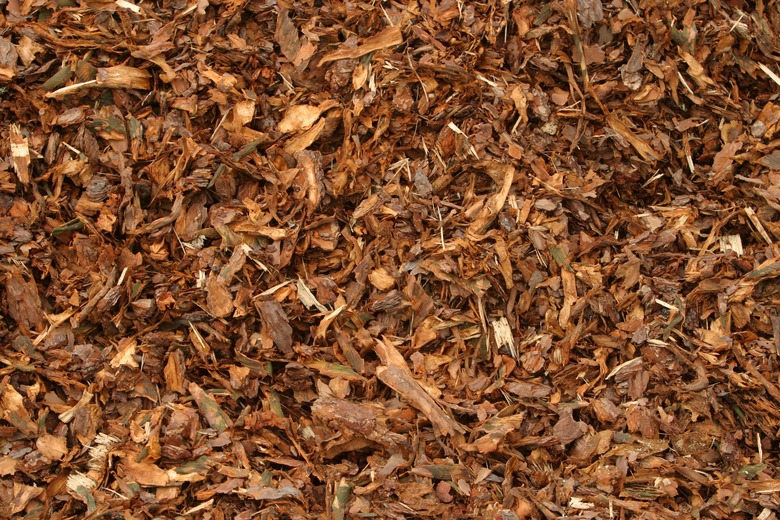How To Put Mulch On Top Of Landscaping Rock
Landscape rocks offer a low-maintenance and flexible way of personalizing your yard. However, they don't provide much benefit to surrounding plants, and their high heat absorption rate can even be detrimental. Because of this, many choose wood mulch instead, and to do this, you might need to know how to put mulch on top of landscaping rocks. After all, if you are looking to switch from landscape rocks to wood mulch, removing the rocks first can be an arduous and tedious task.
Why Choose Wood Mulch?
Unlike landscape rocks, wood mulch has to be replaced every year or two since it decomposes. Its color variety is also limited; it is generally only available in brown, black and red, while landscape rock features a range of colors. Aesthetically, wood mulch is entirely different, and if you are looking to mulch over landscape rock, this is most likely its greater appeal.
There are three major benefits to using wood mulch: moisture retention, temperature moderation and weed control. Just 2 inches of wood mulch will slow moisture evaporation from the soil, giving your plants ample time to soak up the water they need. Additionally, mulch blocks sunlight, keeping the soil cool. That is a welcome relief for stressed plants on hot days.
Picking the Right Mulch
When mulching over landscape rock, choose a mulch with smaller nuggets, or pieces of wood, so that the mulch can fit within the spaces of the landscape rock. This will make full coverage easier and quicker to achieve. Pine bark nugget mulches are recommended for their ease in application, long-lasting quality and size variety.
If the area you wish to mulch sees pooling water and heavy rains, you may want to try a shredded hardwood mulch instead. Shredded hardwood is small enough that it will still be able to fit in the grooves of the rock and won't get carried away in flowing water. Try edging the area or lowering the area that is mulched to reduce the chance of mulch washing away.
Applying the Mulch
To apply mulch on top of landscape rock, you will need the following: the mulch of your choosing, a rake and landscape fabric. The landscape fabric will keep the mulch and landscape rock from mixing together, which will simplify changing out the mulch when the time comes. It will also make things easier if you decide to remove the landscape rock entirely so the plants and soil can reap the full benefits of wood mulch.
First, remove any weeds and debris and then water the plants. Once you have cleaned and prepped, you will need landscape fabric to keep weeds from growing through the mulch. Measure the length of fabric you will need and cut openings in the fabric for the existing plants. Lay the fabric over the area. If using multiple sheets, overlap each sheet by 1/4 inch to prevent weed growth.
When applying mulch, never apply it next to wood siding. Termites can sometimes inhabit wood mulch, but keeping the mulch away from the siding decreases the risk of them finding their way to the house. Empty the bags of mulch over the landscape fabric until the whole area is covered in a layer that's 1 to 2 inches thick, pulling the mulch away from plant stems. Then, even out the mulch with a rake, ensuring that there are not any major hills or valleys.
